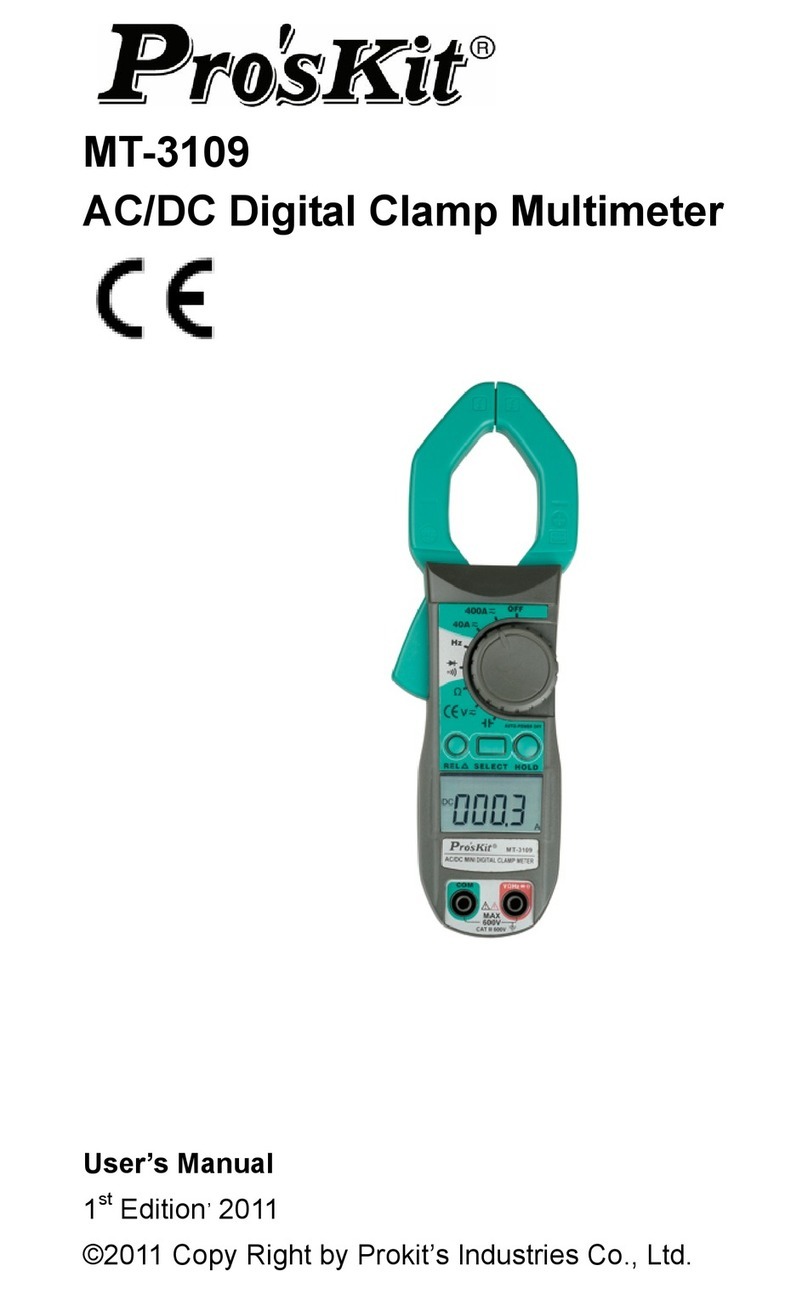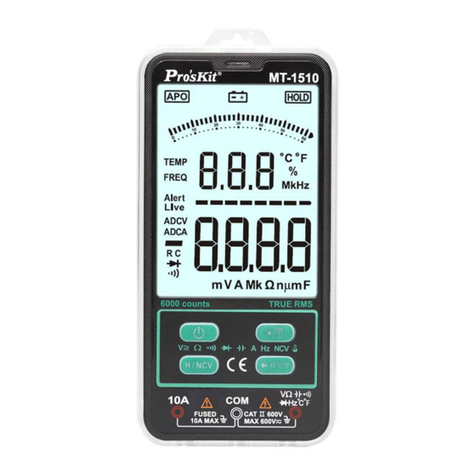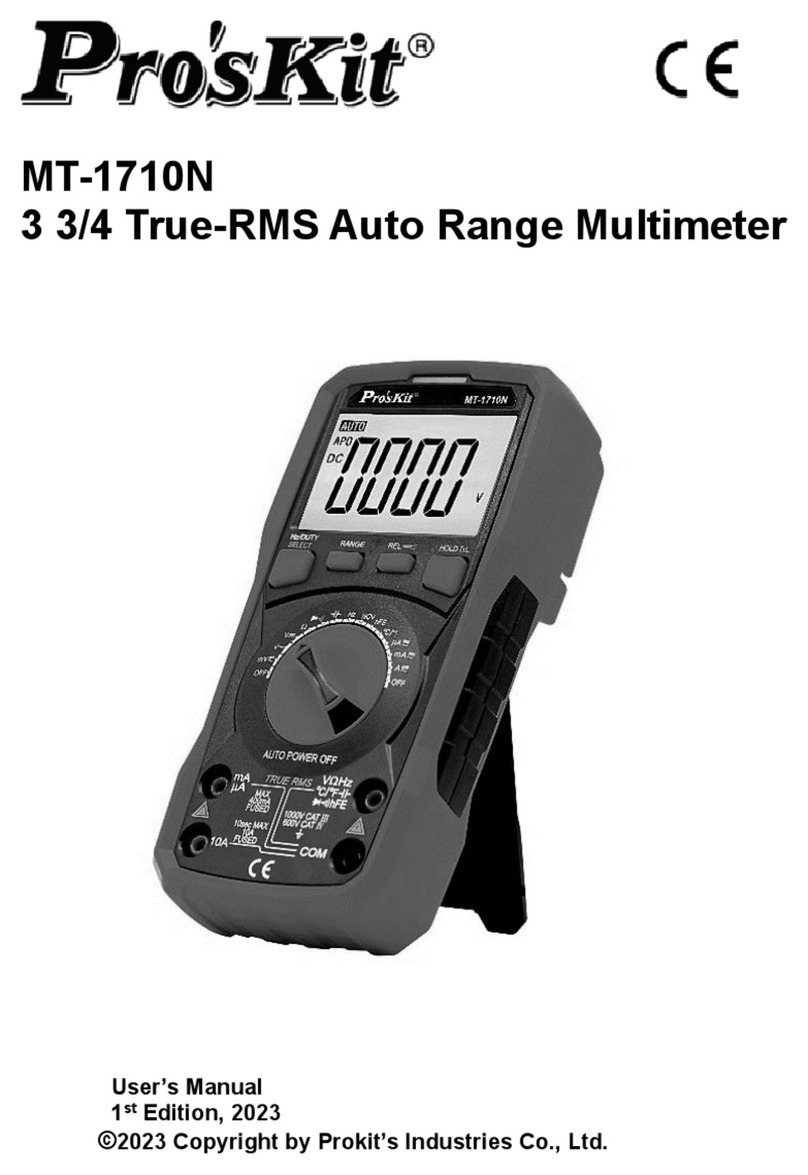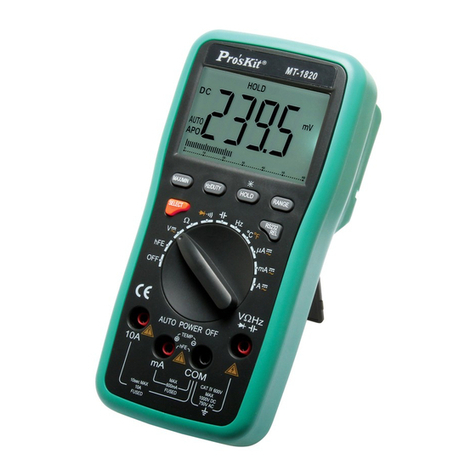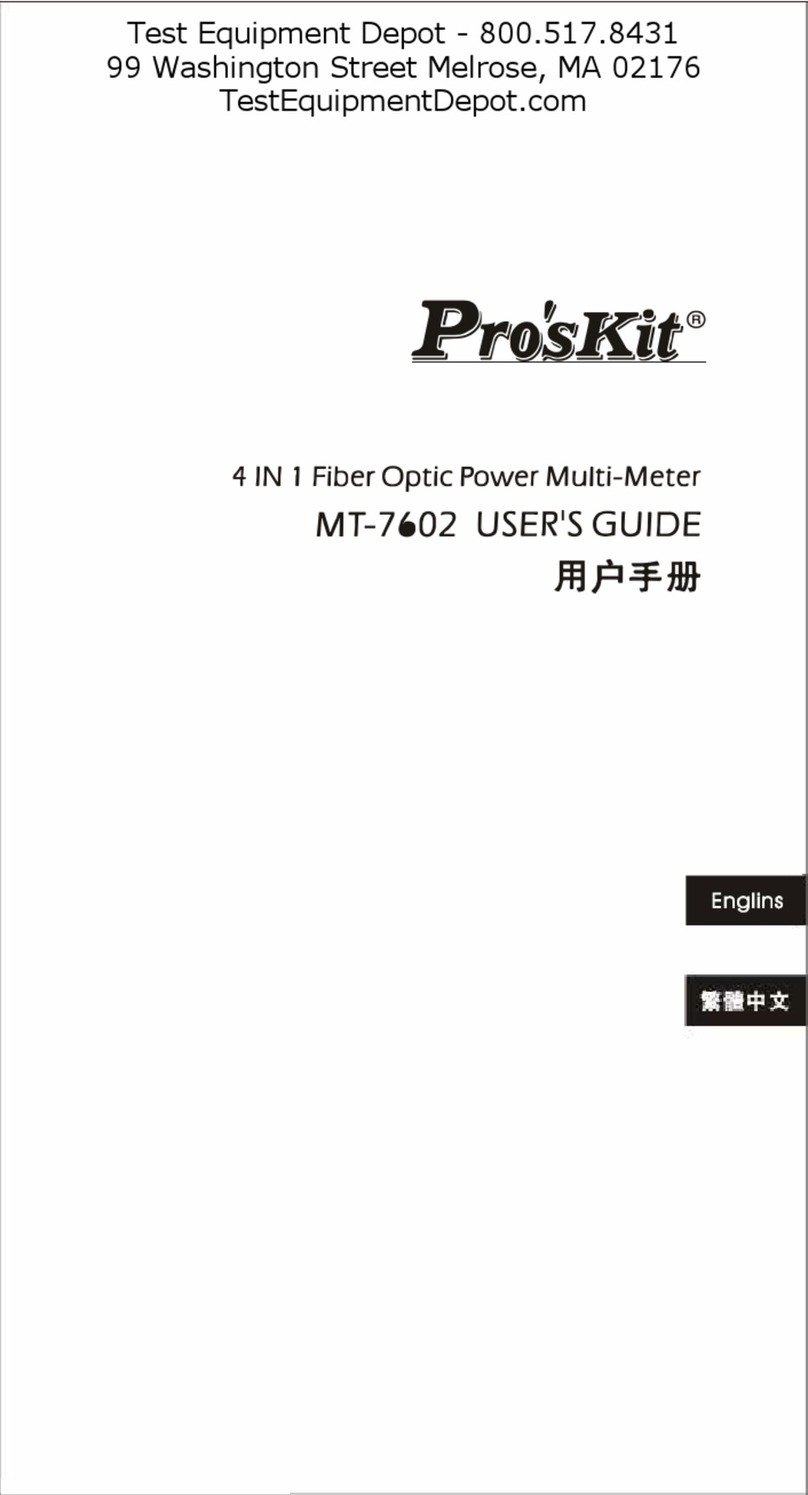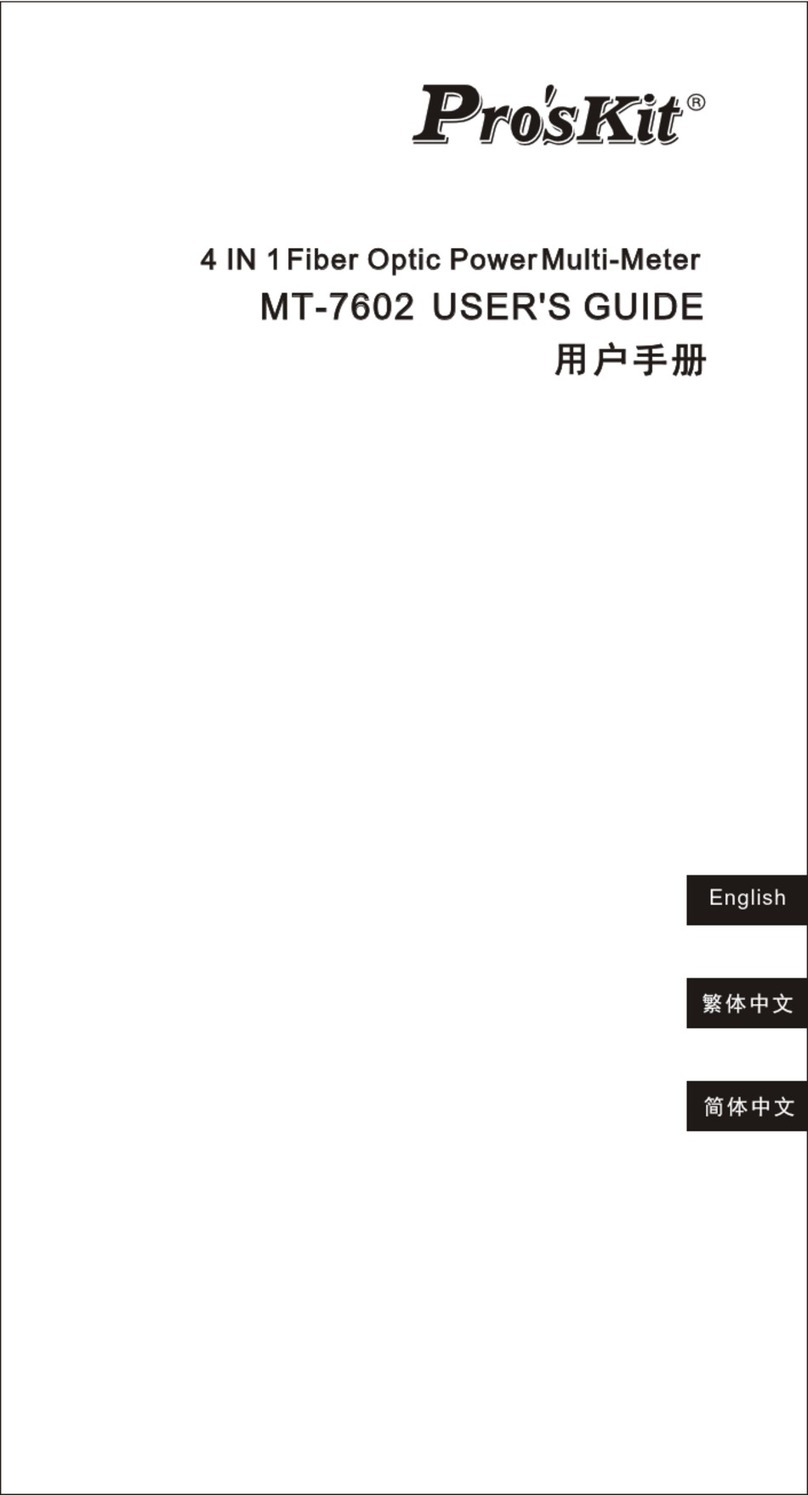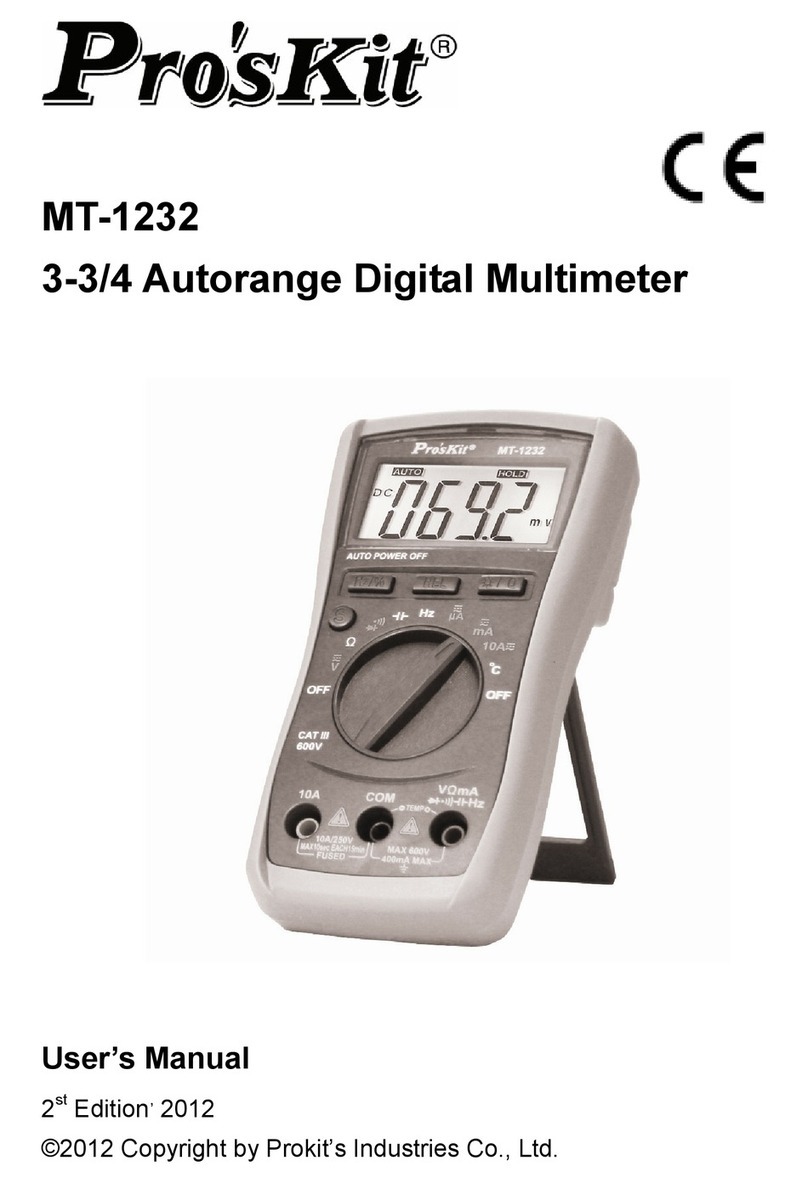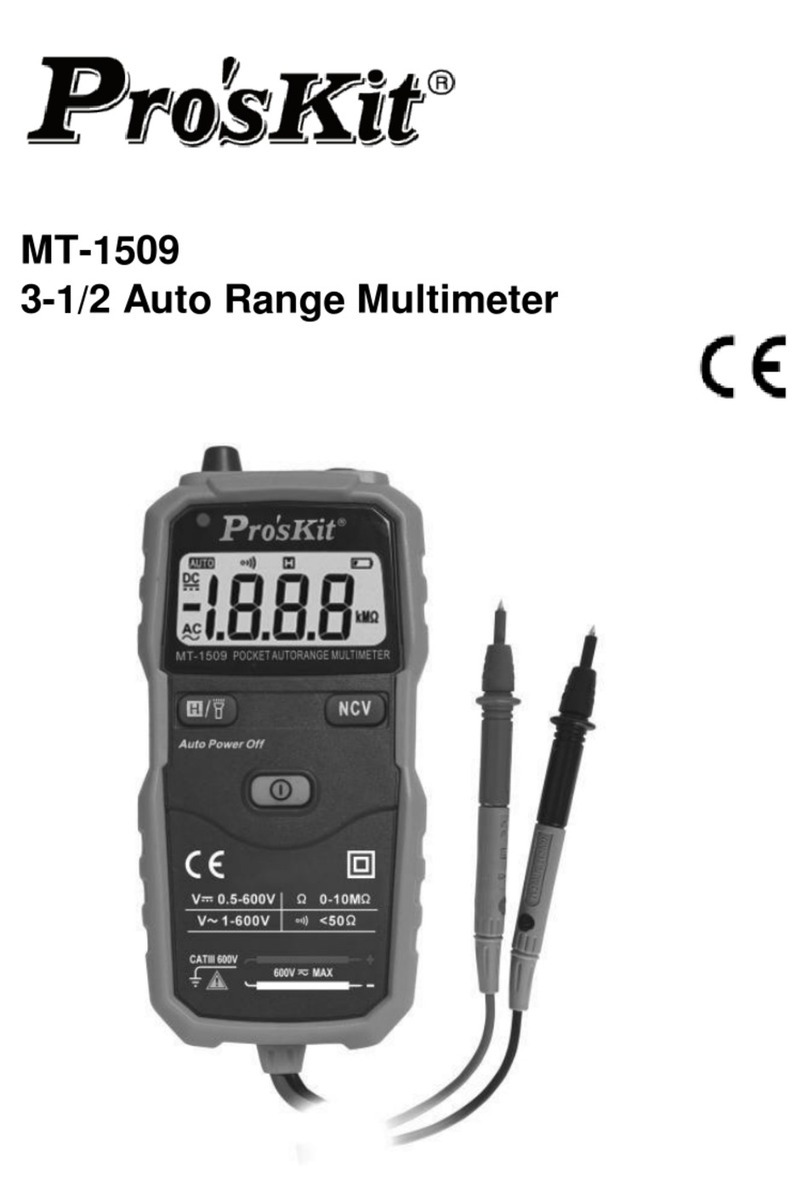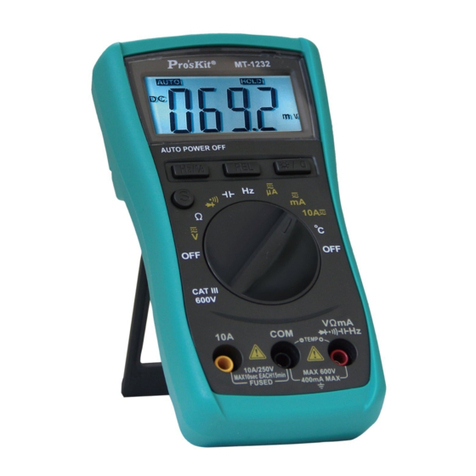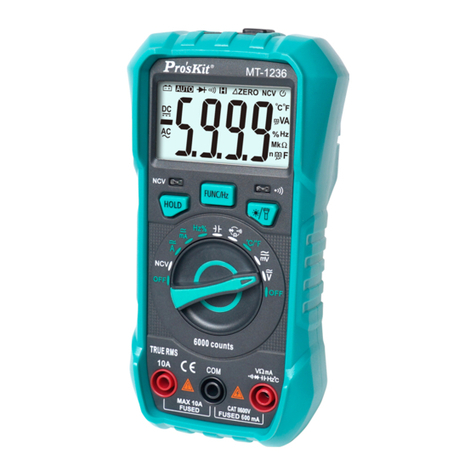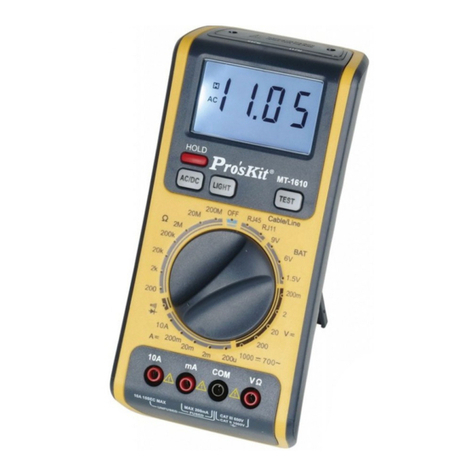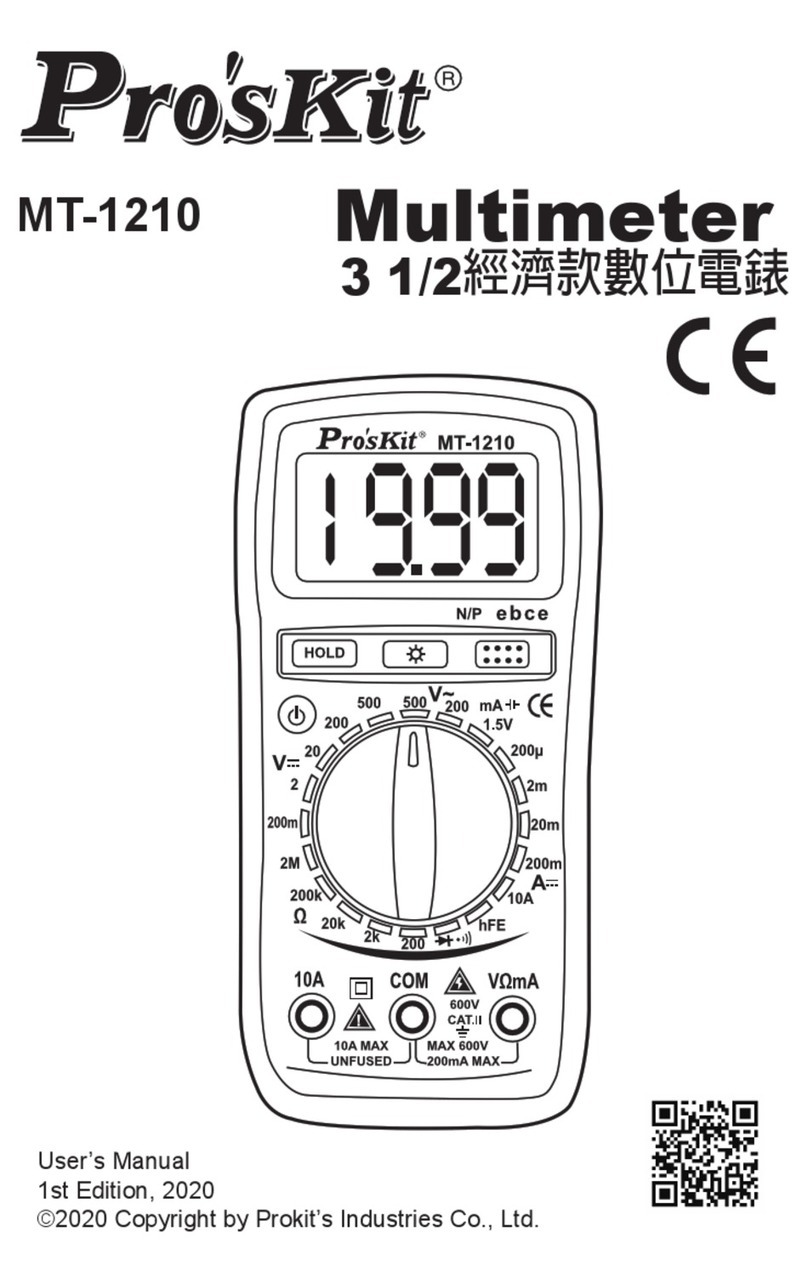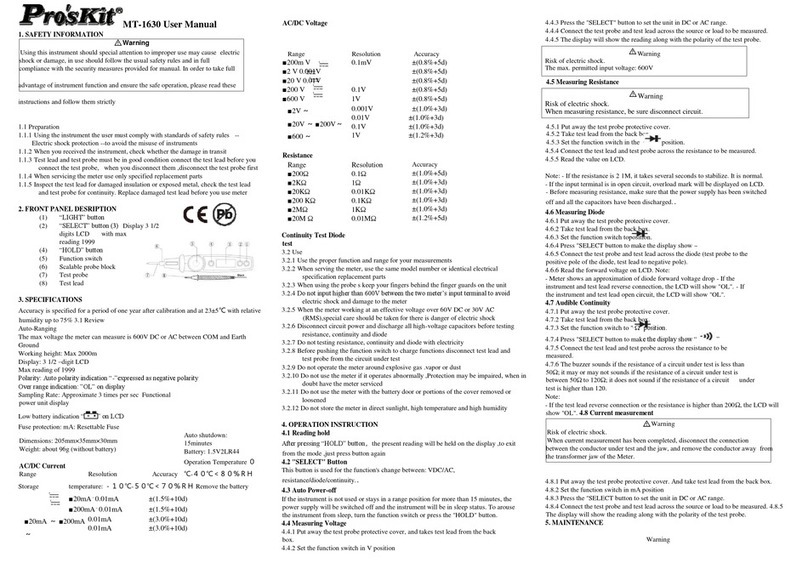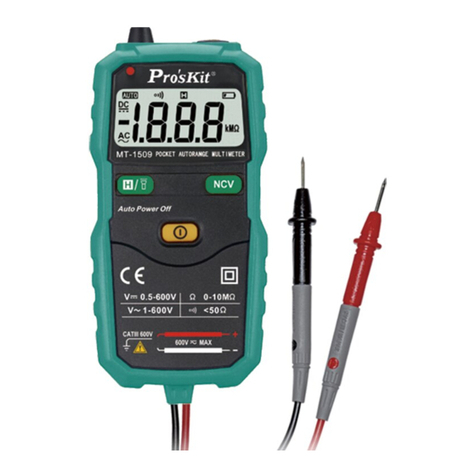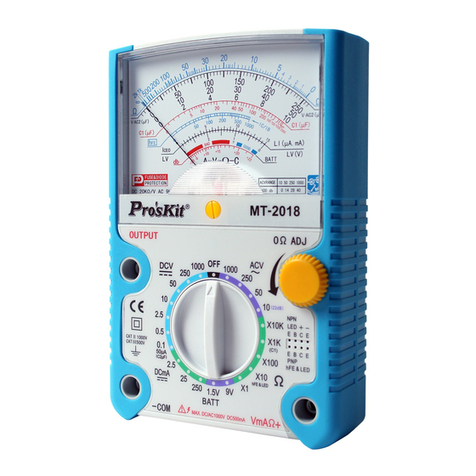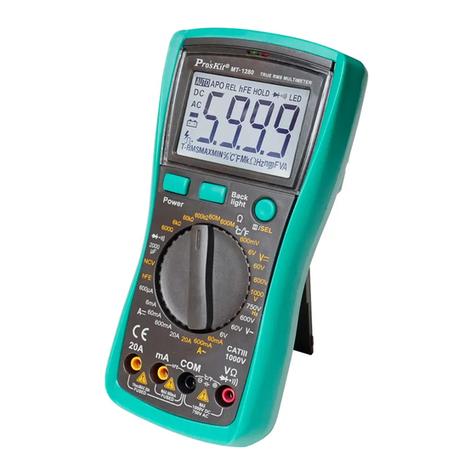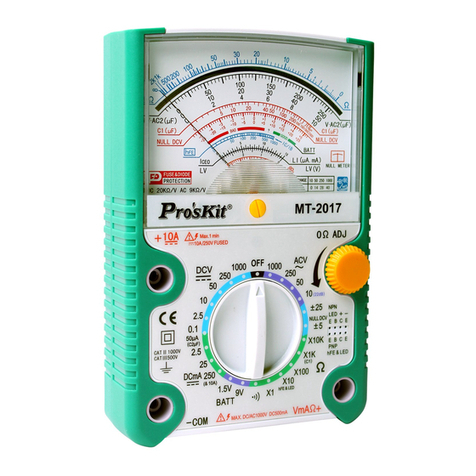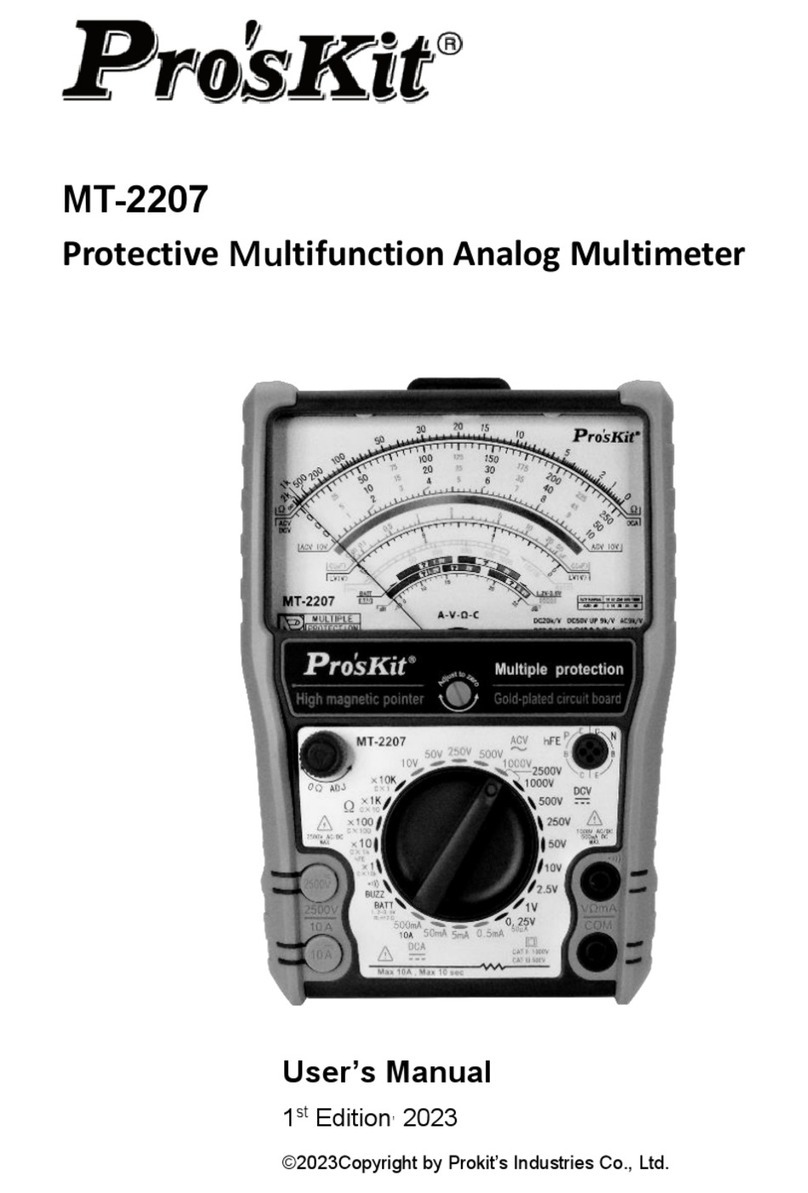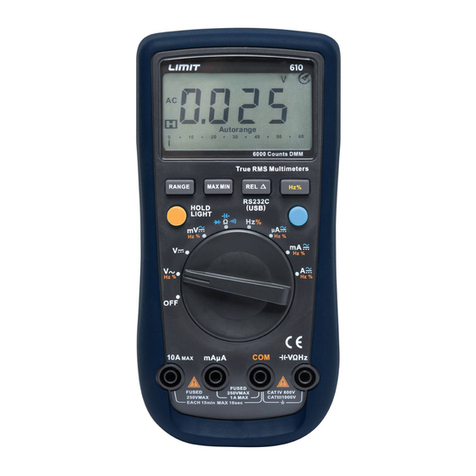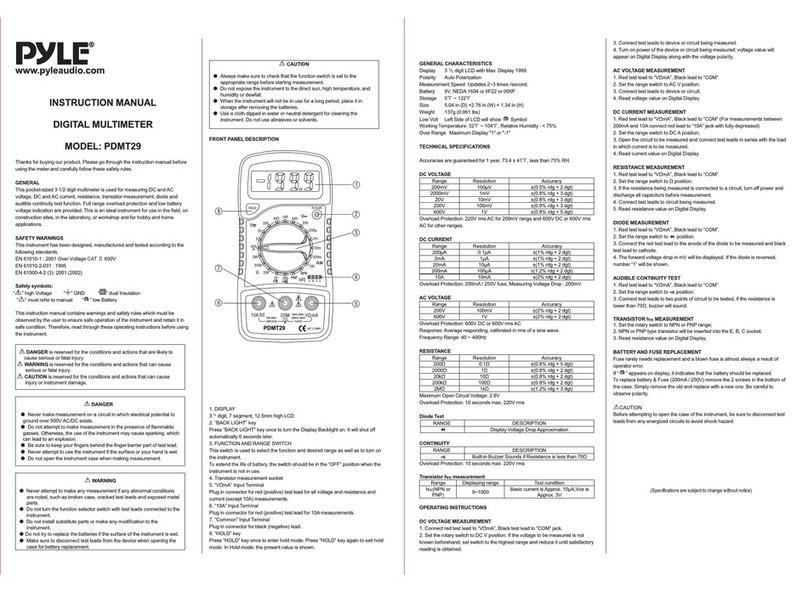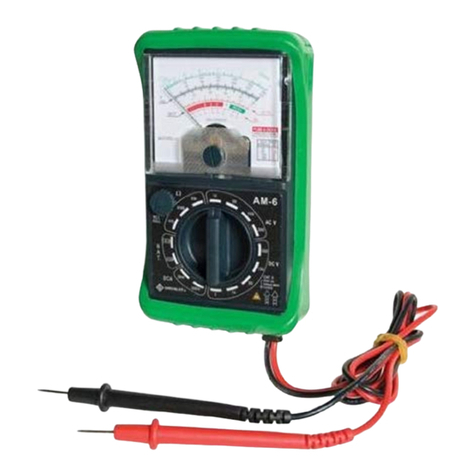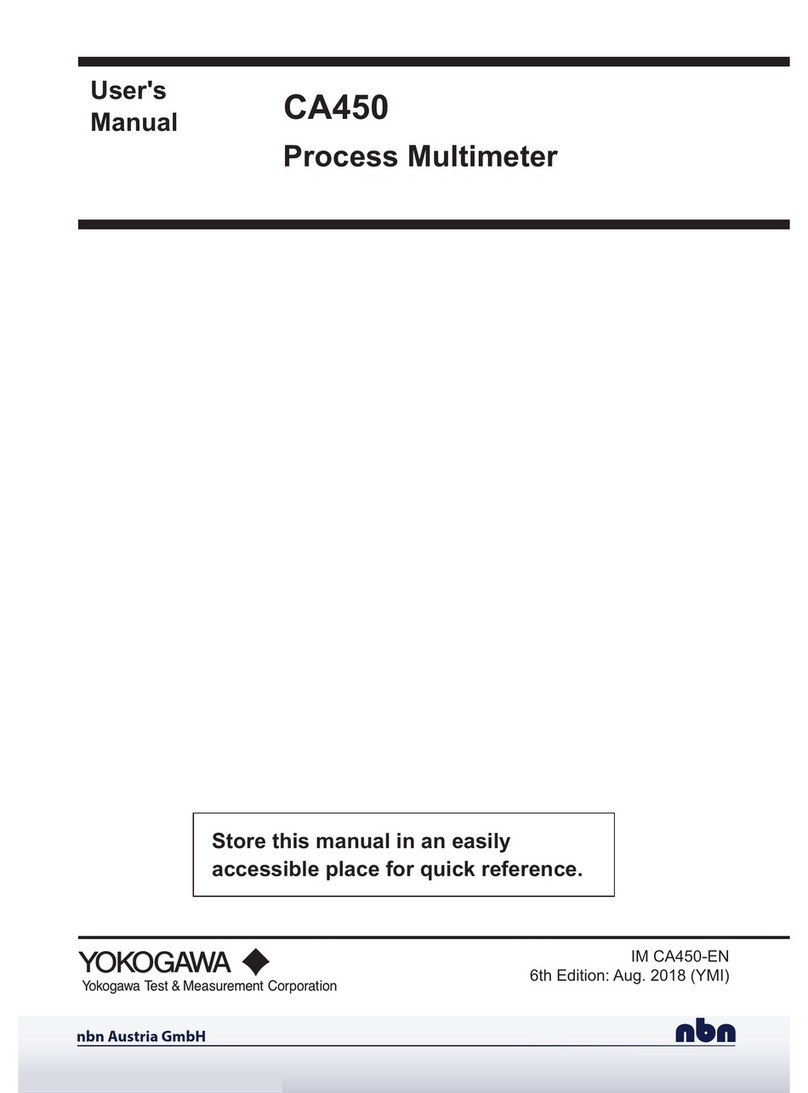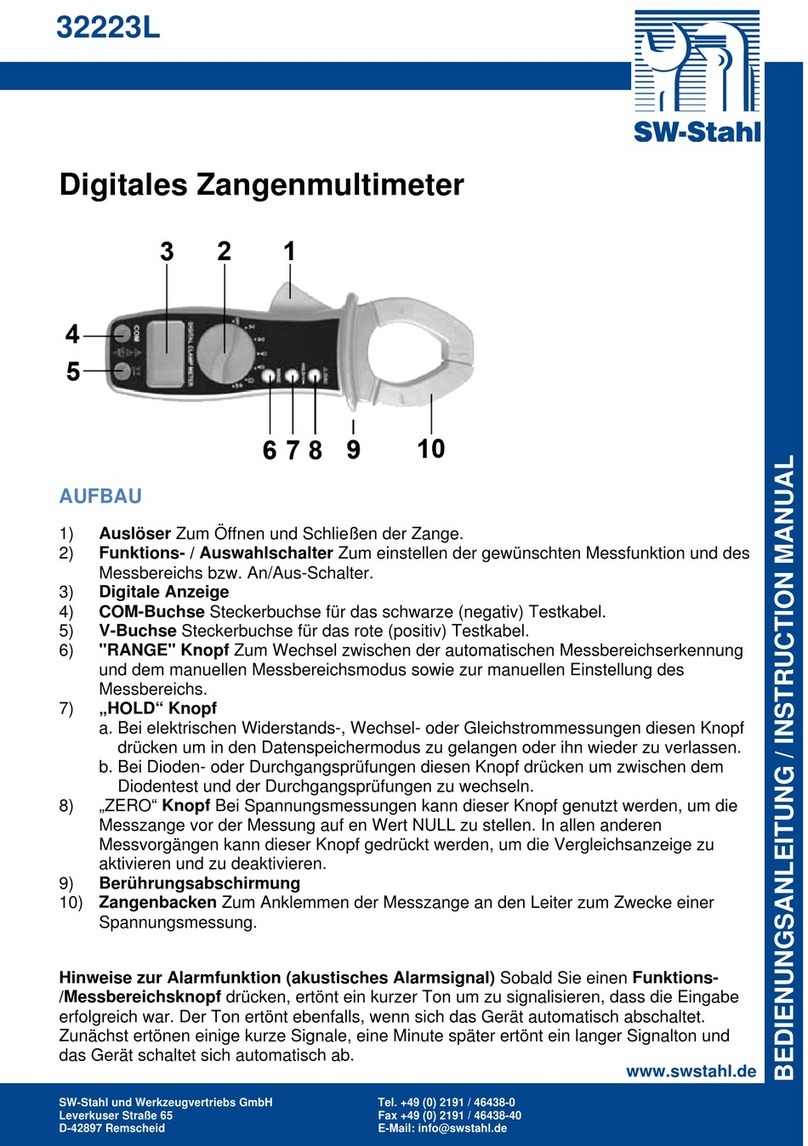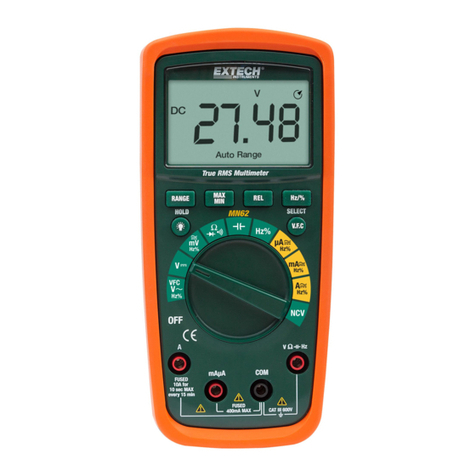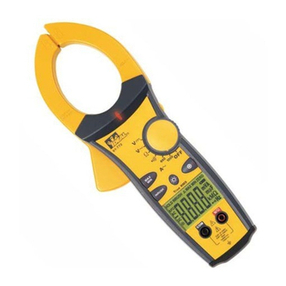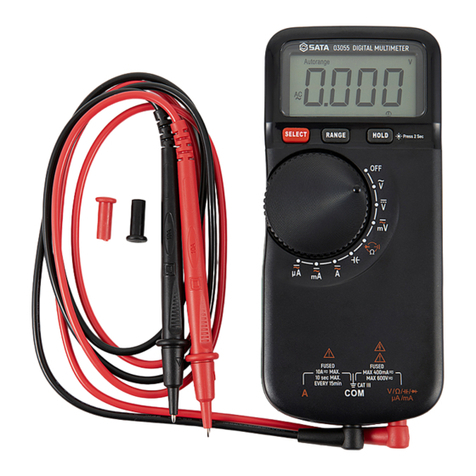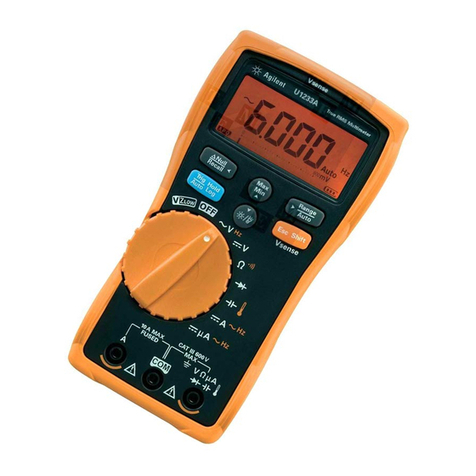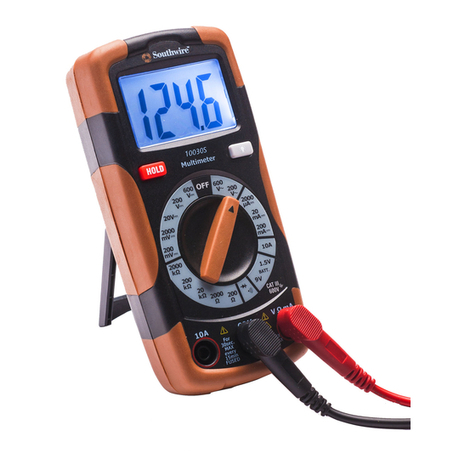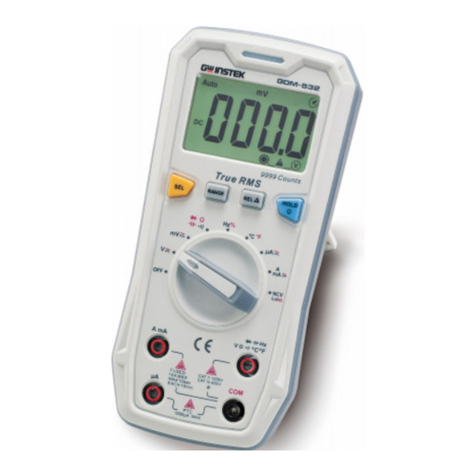2
* The meter is prohibited from being used in the vicinity of any explosive
gas, vapor or dust.
* The measurement must be made with correct input terminals and
functions and within the allowable measuring range.
* To prevent the meter from being damaged, the value to be input shall not
exceed the extremes allowed by each measuring range.
* When the meter has already been connected to the line being measured,
the operator is prohibited from touching the input terminal that is not in
service.
* When the voltage measured exceeds 60Vdc or 30Vac (valid value), the
operator shall be careful enough to avoid electric shock.
* When making measurement with a test lead, place your fingers behind its
protective ring.
* When switching to another measuring range, be sure that test lead has
already been taken off the measured circuit.
* For all DC functions, to prevent potential electric shock as a result of
incorrect reading, please first use AC functions to check the absence of
any AV voltage. Then, select DC voltage measuring range equivalent to or
greater than that for AC voltage.
* Before the tests on electric resistance, diode, capacitor or continuity, the
operator must cut off the power supply to the circuit to be measured, and
discharge all high-voltage capacitors within the circuit to be measured.
* The electric resistance measurement or continuity test cannot be carried
out in any live electrical circuit.
* Before the current measurement, the operator must first examine the
protective tube of the meter. Before connecting the meter to the circuit to
be measured, the operator must first power off the aforesaid circuit.
* Before repairing TV sets or measuring power switching circuit, the
operator must be careful enough to prevent high amplitude voltage
impulse from damaging the meter.
* This meter uses 1 x 9V 6F22 batteries that must be correctly installed into
the battery compartment.





















